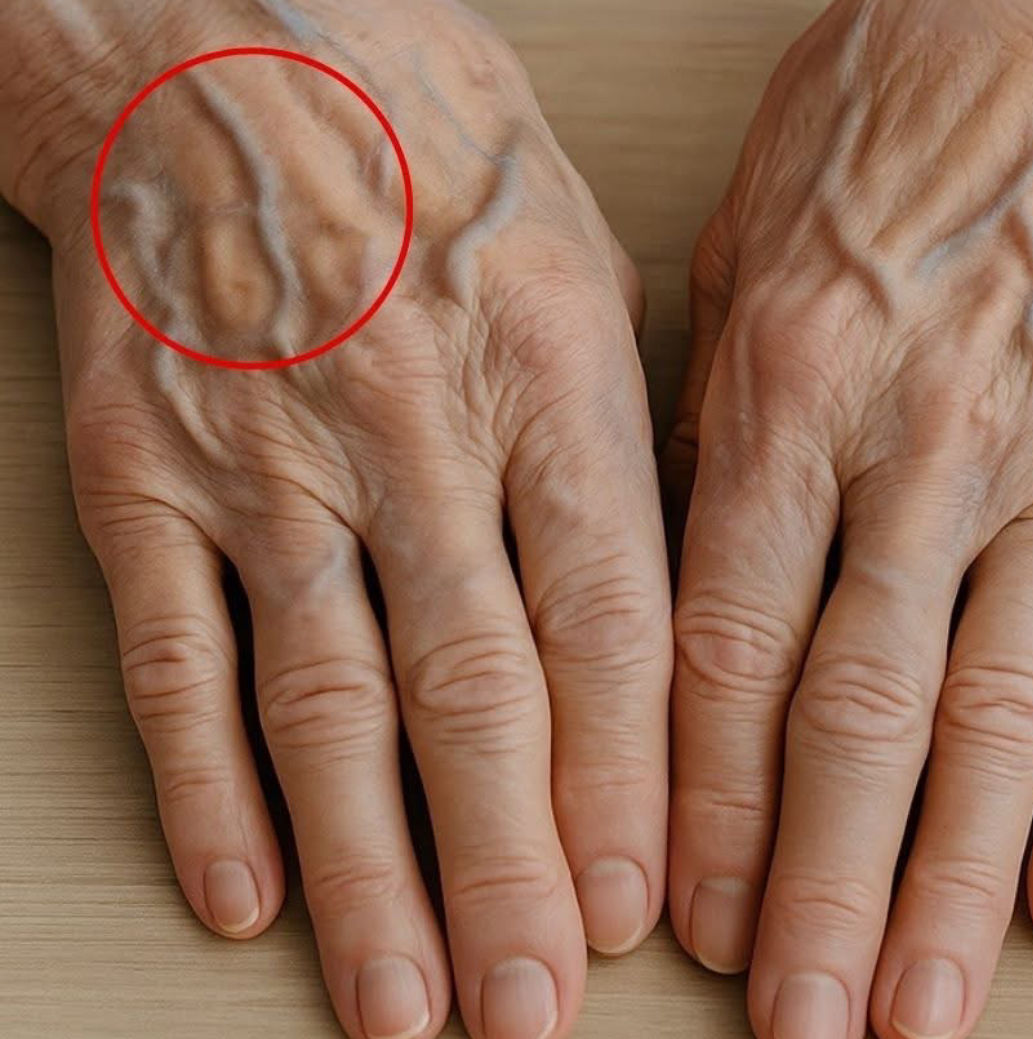Here’s a detailed explanation (long “recipe-style”) on why veins become more noticeable with age, written in an informative, engaging, and structured format similar to a health article:
🩺 Why Veins Become More Noticeable with Age
A Deep Dive into the Aging Body and Vascular Visibility
📖 Introduction:
Have you ever noticed that as people age, their veins—especially on their hands, arms, and legs—seem to become more prominent? This change is common, and while it might seem alarming at first, it’s usually a natural part of aging. Let’s break it down like a “recipe” for vascular changes over time—exploring the “ingredients” (factors) and the “method” (biological processes) behind those more visible veins.
🧬 Ingredients: What Causes Veins to Become More Visible?
Here are the key biological and environmental “ingredients” that contribute to the increased visibility of veins with age:
1.
Thinning Skin
- Main role: Skin loses collagen and elastin.
- Effect: Makes veins appear closer to the surface.
- Starts: As early as your 30s, more noticeable in your 50s and beyond.
2.
Loss of Subcutaneous Fat
- Main role: Fat cushions the veins under your skin.
- Effect: Less fat = less coverage over veins, making them bulge or become more defined.
3.
Decreased Skin Elasticity
- Main role: Aging skin doesn’t “snap back” like it used to.
- Effect: Skin sags and stretches, especially in hands and arms, revealing underlying veins.
4.
Weakened Vein Walls and Valves
- Main role: Valves prevent blood from pooling.
- Effect: Veins may become enlarged (varicose or spider veins) or more twisted and prominent.
5.
Slower Circulation and Gravity
- Main role: Blood flows less efficiently due to less physical activity and weakened vein valves.
- Effect: Leads to vein enlargement in legs and lower extremities.
6.
Sun Damage
- Main role: UV rays break down collagen in the skin.
- Effect: Increases skin aging, thinning, and makes veins stand out more, especially on the face and hands.
7.
Genetics
- Main role: Your DNA influences how your veins develop.
- Effect: Some people naturally have more visible veins, which become more pronounced with age.
8.
Exercise and Muscle Tone
- Main role: Fit individuals often have lower body fat and more muscle tone.
- Effect: Veins become more visible from increased blood flow and reduced fat.
🧪 Method: How These Changes Happen Over Time
Step 1:
Youthful Vein Camouflage
In your 20s and 30s, thick skin and a healthy fat layer keep veins hidden. Blood vessels are elastic and blood flows freely.
Step 2:
Midlife Skin and Fat Changes
In your 40s and 50s, collagen loss, fat reduction, and skin thinning start exposing veins—especially in the hands, feet, and legs.
Step 3:
Vein Expansion & Valve Weakening
As the valves inside your veins weaken (due to gravity, genetics, or long-standing pressure), blood can pool and stretch the veins—this is when varicose veins may appear.
Step 4:
Visible Veins Become the Norm
By your 60s and 70s, most people have visibly prominent veins, even if they are completely healthy. This is more cosmetic than medical unless accompanied by pain, swelling, or ulcers.
💡 Tips for Managing or Minimizing Visible Veins
- Stay Active: Walking and stretching improve circulation and reduce pooling in leg veins.
- Hydrate and Moisturize: Keeps skin supple and supports elasticity.
- Sun Protection: Wear sunscreen to protect collagen and slow skin thinning.
- Compression Stockings: Help push blood back toward the heart, especially for varicose veins.
- Elevate Legs: Reduces pressure on leg veins and helps circulation.
- Healthy Diet: High in antioxidants (vitamin C, E) to support vein and skin health.
- Medical Treatments (if needed):
- Sclerotherapy
- Laser therapy
- Endovenous ablation
- Surgery (in rare cases)
📌 When to See a Doctor
Visible veins are usually harmless. However, see a healthcare provider if you notice:
- Pain or aching around veins
- Swelling in legs or ankles
- Changes in skin color or texture
- Ulcers or bleeding near veins
- Sudden increase in vein visibility on one limb
🍽️ Final Thoughts (Conclusion)
Visible veins with age are typically a cosmetic sign of natural aging, not a serious health threat. They reflect changes in skin, fat, circulation, and connective tissue. While you can’t completely stop these changes, you can slow their progression and manage appearance with lifestyle choices and medical support when needed.
Just like a good recipe, maintaining vascular health takes balance—between movement, nutrition, and self-care!
Would you like a printable version of this or a health graphic/infographic showing the stages?
